“I’m lovin’ it.”
“Just do it.”
“What’s in your wallet?”
We are guessing that these words made some very clear brand images in your mind (unless you have been living under a rock) – some golden arches, a swoosh, and a credit card that may actually be in your wallet.
We can go on all day with similar examples of some of the most recognizable and biggest brands. But it’s worth noting that these brands are much more than just a killer logo or catchy & snappy slogan – they were built strategically with a lot of time and effort.
Have you ever thought that the same can be true for your brand, too? Maybe you want to be the Apple of the SaaS world or the next Nike in the tech industry. But how do you take your brand there? Keep reading because you are about to find out the secrets of effective brand building to dominate your market.

Do you see it?
It’s a very twisty road.
Now, let me ask you a question:
How do you create a sustainable brand?
The clue is right there in the image – it’s all about having a sustainable brand roadmap.
You see, creating a brand from scratch requires a clear plan to guide you on your journey.
Just like twisty roads, unique brand building involves:
- Making several decisions
- Coming across twists and turns
- Sometimes even revisiting those decisions along the way
It’s normal to question yourself and wonder if you’re on the right track. But remember, brand building is a journey.
If you’re not willing to create a brand roadmap to guide you, then you’re not on the right track. Effective brand building requires determination, strength, and a clear vision.
But if you’re up for the challenge, then keep on reading!
How to build a brand from scratch (with absolutely no knowledge)?
With the right mindset, creativity, and a willingness to learn, you can create a remarkable brand that stands out in the crowd. Here are the steps to brand building from scratch:
Step 1: Pinpoint Your Ideal Customer
Alright, now that you’ve nailed down your awesome business niche.
So, it’s time to figure out who your ideal customers are and what they truly need.
But hold on a sec! Before you can start asking them questions, you’ve got to know who they actually are. 🧑🤝🧑
Let me tell you, this step is uber-important for several reasons.
First off, it helps you establish your brand’s voice and tone. You can communicate with them in a way that resonates and connects deeply.
Plus, it sets the foundation for your all-important market research (which we’ll cover in the next step).
But here’s the best part: pinpointing your ideal customers is key to building a long-term brand that truly stands the test of time.
By understanding their wants, needs, and pain points, you can create products or services that address their specific challenges.
So, let’s dive in! Start by asking yourself:
- Who are your potential customers?
- What are their demographics? Age, gender, location, etc.
- What are their interests, hobbies, and lifestyle?
- What are their pain points and challenges?
- What solutions are they actively seeking?
Once you have a clearer picture of your ideal customers, it’s time to roll up your sleeves and conduct some market research.
This will help you:
- Gather insights
- Validate your assumptions
- Fine-tune your business strategy
Remember, successful brand building requires a deep understanding of your customers.
So, let’s get to know them inside out and lay the foundation for a customer-centric business.
Step 2: Research Your Competitors
Competitor research is crucial in building your brand and establishing yourself as a leader in your industry. Trust me, every brand has competitors, but by doing good competitor research, you can carve out a unique and relevant space for your brand. You’ll find gaps your competitors are missing and fill them for your consumers.
So, let’s talk about how to find and research your competitors.
First up, a simple Google search for your product category or industry can do wonders. Take a peek and see who’s out there.
Oh, and don’t forget about social media and Reddit! Dive into those conversations and see which brands are making the most noise. They’re worth paying attention to.
Another handy trick for brand building is to conduct hashtag searches on social media. You’ll quickly spot which brands use those hashtags and get a sense of who’s active in your niche.
Once you’ve identified similar brands, it’s time to conduct a competitor analysis. But don’t worry, you’re not trying to copy everything they do. Instead, use their brand building strategies as inspiration for building your own brand.
During your analysis, ask yourself some key questions.
- Do their brand assets, like the logo, font, and colors, work?
- What’s their tone of voice?
- Are they personable, business-like, or funny?
- How do they establish their presence in the marketplace?
- Do they have a regular flow of content across social media, blogs, and their website?
- Check out those online reviews. How do they engage with consumers?
Now, if you’re an online business, you’ve got some fantastic tools at your disposal. One popular option is Semrush. It helps you analyze your website’s performance and lets you take a peek at your competitors. You’ll get insights into their backlinks, keywords, social influence, brand mentions, traffic, and more. It’s a goldmine of information about their target audience and how they reach them.
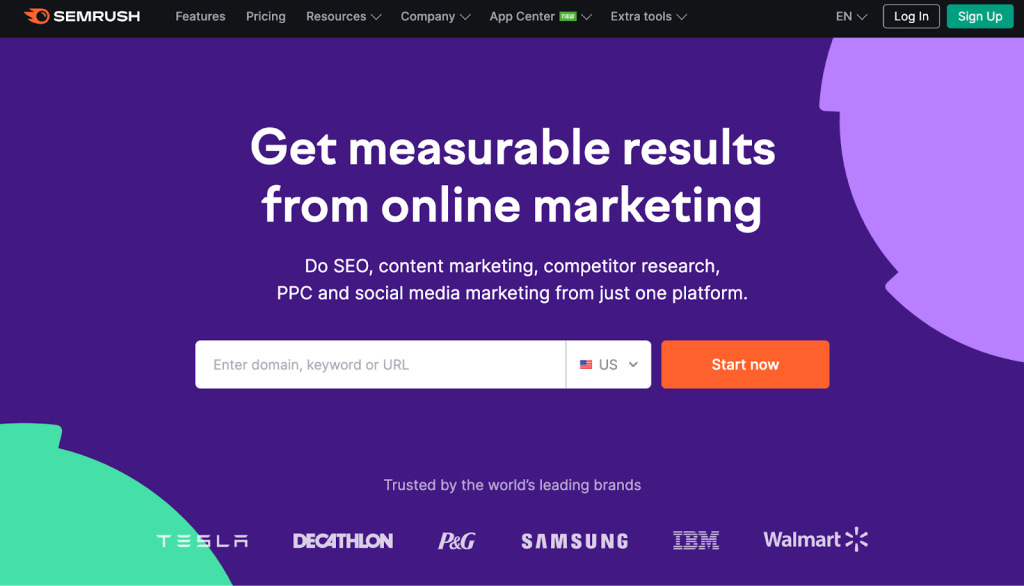
But hey, if you’re just starting out and don’t want to shell out money for fancy software, no worries! You can still do your competitor research manually. It may take a bit more time and effort, but trust me, it’s worth it.
Her is a sample Competitor research template
| Competitor Name | Competitor 1 | Competitor 2 | Competitor 3 | Competitor 4 |
| Website | ||||
| Target Audience | ||||
| Unique Selling Proposition | ||||
| Key Features | ||||
| Pricing | ||||
| Online Presence | ||||
| Marketing Strategies |
Step 3: Define Your Brand’s Focus
When it comes to brand building, it’s essential to keep your focus in mind, especially in the early stages.
Trust me, trying to solve everyone’s problems can get frustrating. Instead, concentrate on what you know you do best.
Your brand’s solutions are like a secret weapon that should shine through your website copy, mission statement, and social media platforms. Think of it as your elevator speech to grab consumers’ attention.
Here’s what you need to include in that statement:
- Your brand’s product or service: Clearly state what you offer. Keep it simple and straightforward.
- Your target market: Describe the type of people who would benefit from your product or service. Who’s your ideal customer?
- What makes your brand unique: Highlight what sets you apart from the competition. It could be your approach, your values, or even your quirky personality.
- The problem your brand solves: Pinpoint the specific problem or pain point that your brand tackles head-on. Show how you’re the solution.
If you’re wondering how to brand your business, it all starts with having a crystal clear understanding of what you do, why you do it, and who you’re doing it for.
Step 4: Define Your Brand’s Personality
Remember, you can’t please everyone all the time. It’s time to focus on deliberate differentiation and define your brand’s personality.
Describe your brand’s character: Think of your brand as a person. Is it classy, trendy, reliable, mature, edgy, or youthful? Jot down those adjectives that define your brand’s personality.
Craft your brand story: This is where you share your core values and mission statement. Make your audience feel connected by highlighting shared goals and ideas.
Answer the “why” before the “how” and “what”: Simon Sinek’s Golden Circle concept is gold. Start with why your business exists, then explore how you do business and what you actually do.
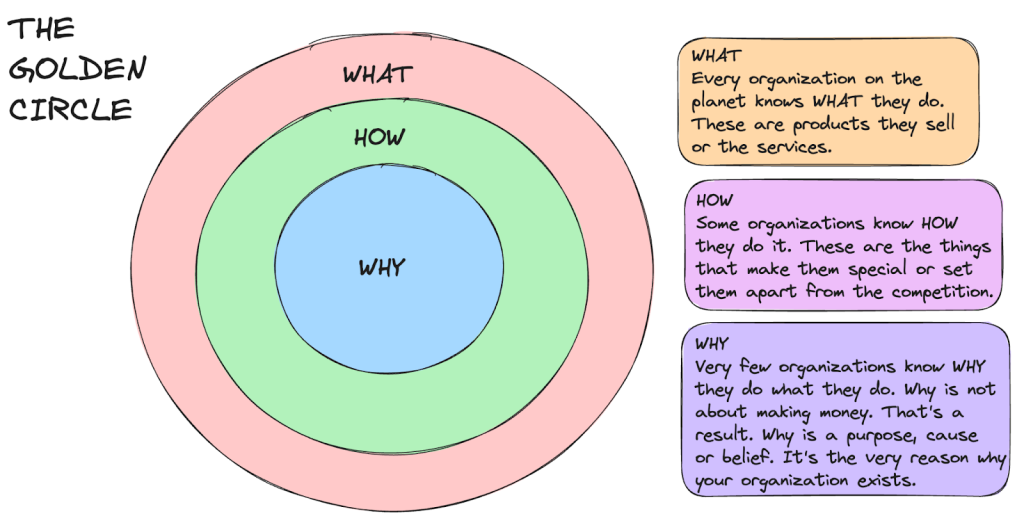
Put yourself in your customers’ shoes: Identify what makes your brand unique and how it benefits your customers. Does your fast food delivery service focus on speed or exceptional customer service? Maybe sustainability is a core value, and you use eco-friendly packaging. Or perhaps you pride yourself on being a family-owned business that knows every customer by name. Outline these points in your brand manifesto.
Let your brand identity shine: Ensure that your brand personality shines through all your assets and experiences. Consistency is key.
Step 5: Choose the right business name
When it comes to finding the perfect brand name, it’s not always an easy task. Here are some tips to help you out:
Keep it short, sweet, and easy to pronounce: A name that rolls off the tongue makes it easier for people to recognize and remember your business.
Reflect your brand’s personality or values: Your name should convey the essence of your brand. Think about what your business stands for and try to incorporate that into the name. For example, if you’re a delivery service, you can highlight either your speed and efficiency or your personalized, familiar approach.
Consider future expansion: Choose a name that allows room for growth. If you have plans to expand your business in the future, make sure the name can accommodate those changes.
Use online tools: Use resources like the Wix Business Name Generator to generate a list of options based on your unique business. This tool even checks for available domain names, making the process smoother.
Do your research: Before settling on a name, search for it on search engines and social media platforms to ensure it hasn’t already been claimed. Also, verify with your local business registration service that the name isn’t trademarked.
Step 6: Craft a catchy slogan
Crafting a catchy slogan takes creativity and a deep understanding of your brand. Take your time to brainstorm ideas, test them out, and select the one that best represents your brand’s personality and resonates with your target audience.
Capture your brand’s spirit and values: Your slogan should reflect the essence of your brand and what it stands for.
Use it as a brand asset: A slogan can be a powerful tool to connect with your audience. It can be incorporated across various platforms and materials, from business cards to social media bios.
Look for inspiration: Take a look at successful slogans used by popular brands. Examples like TikTok’s “Make every second count” or Skittles’ “Taste the rainbow” show how a few words can convey a specific identity or atmosphere.
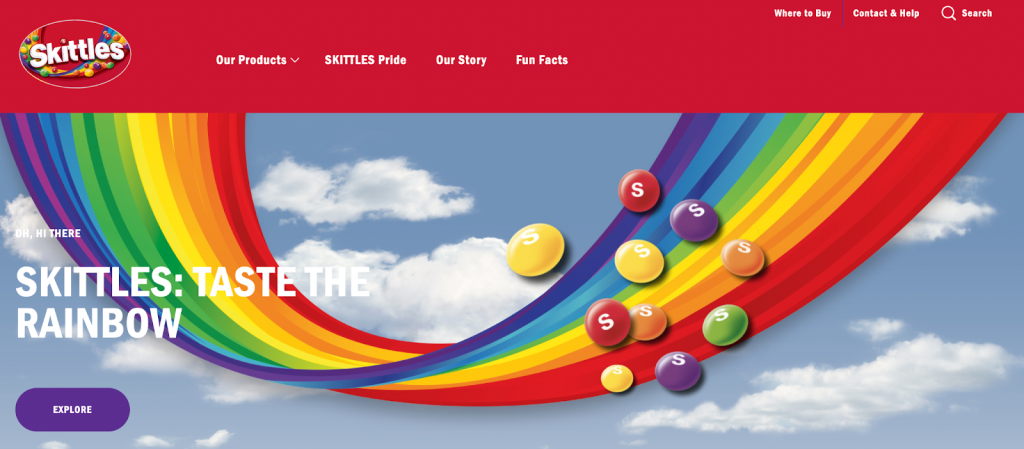
Keep it short and memorable: A catchy slogan is easy to remember and resonates with your audience. Aim for brevity and choose words that leave a lasting impact.
Step 7: Design a professional logo
Your logo is the heart and soul of your brand, showcasing its essence and leaving a lasting impression.
Seek inspiration from the greats: Take a peek at iconic logos like Chanel’s interlocking C’s or the handwritten Walt Disney signature. Notice how these famous logos go beyond the literal and instead capture the brand’s identity and personality. It’s a clever design tip that can work wonders for your own logo.
Flexibility is key: Ensure your logo can shape-shift effortlessly across different sizes and locations. It should shine in various contexts, whether it’s a full design or a simplified icon or wordmark, adapting to any space it graces.
Infuse meaning into every detail: Your logo is a visual storyteller, speaking volumes about your brand’s values and voice. Each element weaves a narrative from the vibrant color palette to the captivating typography.
Take inspiration from Opal Camera’s logo – a minimalist design with a black and white palette, symbolizing their commitment to elevating work-from-home essentials. The clever interplay of geometric shapes – a circle for the lens and a triangle representing a captured image – captures the essence of their product.

Let your logo lead the way: Once your logo is ready, let it guide your branding efforts. From your professional website to its captivating favicon and beyond, your logo should be a constant reminder of the magical world you’ve created.
Step 8: Define a visual identity
Visual identity goes beyond just a logo – it encompasses colors, fonts, photography, graphics, and more. By curating a captivating visual identity and creating a comprehensive brand style guide, you’ll ensure that your brand remains consistent and memorable at every touchpoint. Let your creativity flow, and watch your brand come to life!
Brand colors: Choose a palette of five to ten colors representing your brand. Think of Slack’s vibrant quartet or Instagram’s warm gradient. Consider color psychology and industry associations when selecting your hues.
Typography: Select one to three fonts that reflect your brand’s personality. Create beautiful font pairings for a cohesive look, Whether a traditional serif or a modern sans serif. Consider purchasing font licenses to ensure legal usage.
Photography: Pay attention to the subjects, composition, and style of your photographs. Diversify your models and subjects to communicate your brand’s message effectively.
Graphics, illustrations, and icons: Integrate these elements to shape your brand’s messaging and create a cohesive visual identity. Use them in various assets such as website buttons, social media profiles, and package labels.
Create a brand style guide: Maintain consistency by documenting your visual identity and non-visual elements like mission and vision statements. This guide serves as a foundation for anyone interacting with your brand.
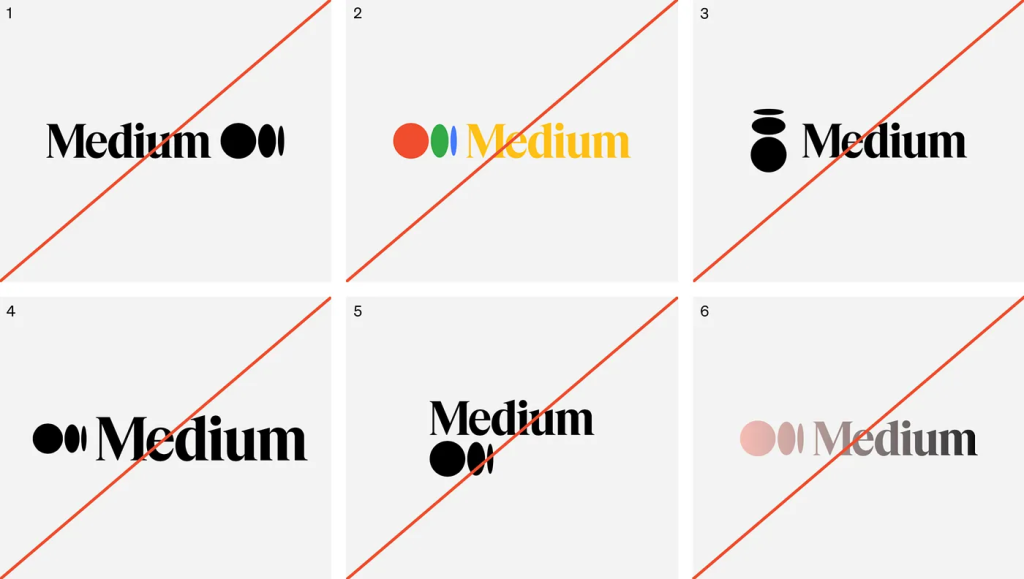
Step 9: Establish a Brand Voice that is Unique to Your Company
Almost 25% of people recognize a brand by its unique voice.
When it comes to your brand voice, consistency is key! You want your messaging to be professional, yet approachable and engaging.
It’s like the personality of your company, giving it a distinct tone that sets you apart from the competition. Having a unique brand voice is important for customers to understand who you are and what makes your brand special. In fact, studies have shown that businesses with a well-defined brand voice have higher customer loyalty and brand recognition.
Step 10: Stay Consistent
Consistency is key when it comes to building a strong brand identity. It’s important to ensure that all your marketing materials align with your brand identity and maintain a consistent tone of voice across all platforms. This helps to create a positive perception of your brand among customers and builds trust and recognition.
Did you know that consistent brand imaging across all marketing materials can increase revenue by up to 23%?
Customers appreciate a cohesive brand experience, from the products you sell to the way you interact with them through customer service. So, make sure to invest time and effort into maintaining consistency in your brand messaging and visuals.
Step 11: Find Your Values and Mission
“A brand’s strength is built upon its determination to promote its own distinctive values and mission.”
Jean-Noel Kapferer
Now that you have your startup story, it’s time to dig deeper and identify key ideas and words that capture the essence of your business. Take a moment to jot down any words that come to mind when you think about your business. These words will serve as the pillars that support the rest of your brand.
Define the mission of your business in a clear and concise manner. Go beyond just selling products or services and explain what you aim to achieve for your customers. Research shows that businesses with a strong mission statement are more likely to attract and retain customers who resonate with their values.
Step 12: Tell Your Brand Story
“Every business has a story to tell.”
Jay Baer
Now that you’ve figured out what your brand stands for, how do you communicate those values to your customers? That’s where your brand story comes in.
Sharing your brand story is not just about having it on your website, but also weaving elements of that story into other brand assets, like social media posts or email outreach.
Humans are naturally drawn to storytelling, and brands that effectively communicate their story are the ones that establish authentic relationships with consumers. According to Canva, this lays a solid foundation for building brand equity and trust.
Step 13: Identify Your Buyer Persona
Research by HubSpot shows that using addressing buyer fears on your landing pages can increase conversion rates by 80%.
When it comes to your brand, understanding your target audience is crucial. While not every customer will perfectly fit your buyer persona, you’ll often find some overlap. To get started quickly and easily, you can use a buyer persona template. This helps you paint a clear picture of your ideal customer and tailor your brand messaging to resonate with them.
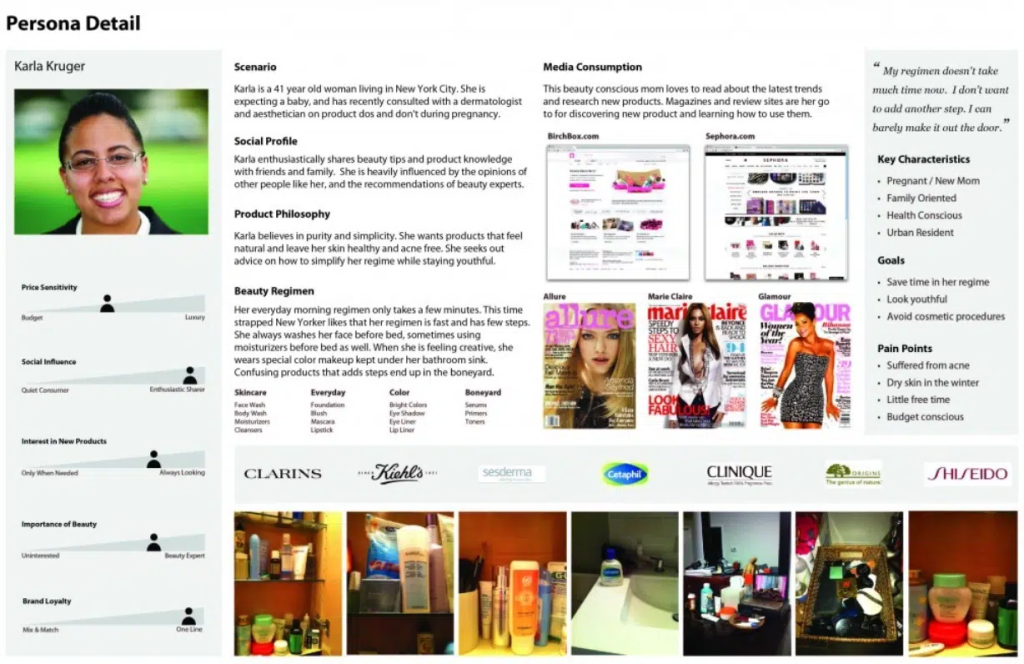
Step 14: Highlight Your USP
What is it that sets you apart from your competitors?
Your USP is that special something that makes your brand stand out in the market. It might be something obvious, depending on your industry and product/service.
But, if you’re in a highly competitive market, it may require some digging to uncover. Once you identify your USP, make it a central part of your brand development strategies to differentiate yourself and attract customers.
Step 15: Start Your Content Marketing
Get started with your content marketing strategy right from the early days of your brand building.
Why is this so important, you ask? Let me break it down for you:
Understand that publishing high-quality blogs consistently is just the beginning. Your blogs need time to gain traction. They need to be out there for a while.
You see, no blog post targeting a valuable keyword can magically jump to the top of the search engine results page on the same day.
It takes time for your content to be seen and recognized. But don’t let that discourage you.
The lifespan of blog content is unbeatable when it comes to connecting with your audience and driving sales.
| Platform | How long does content last? |
| Blog | 2 years |
| 4 months | |
| YouTube | 20+ days |
| 24 hours | |
| 21 hours | |
| 5 hours | |
| 18 minutes |
To get the most out of your content marketing efforts, it’s wise to invest in both blogging and YouTube videos.
These content types offer a great return on investment in terms of time and energy, especially in the early stages of your business.
Step 16: Build a Lead Generation Funnel
Build a lead generation funnel that feels authentic and trustworthy.
This funnel is an important element in the journey of brand building from scratch. It leads people from being complete strangers to becoming paying customers.
Let me show you an example of what a great lead generation funnel can look like:

There’s an art and a science to getting this right. You shouldn’t use methods that make your leads run in the opposite direction.
You don’t need to complicate an attraction-based funnel. It should excel your business even when you’re not involved in every single step.
Now, here’s a big secret that many sleazy, clickbaity, upselling funnels won’t tell you:
Since you have got the golden opportunity to start your business from scratch, infuse every aspect of it with trust.
You should incorporate this concept in every other content you create.
Brand trust is important. So, keep your funnel genuine, honest, and skip the sleazy tactics.
I promise you, your customers will appreciate and fall in love with your brand. ❤️
In Conclusion
Don’t underestimate the power of a strong and memorable brand.
Small details make a big impact in brand building.
Dedication and perseverance are key to establishing a strong online presence.
With this roadmap, you have all the knowledge to start building your brand online. Take a moment to read the steps and get started on your brand building journey.